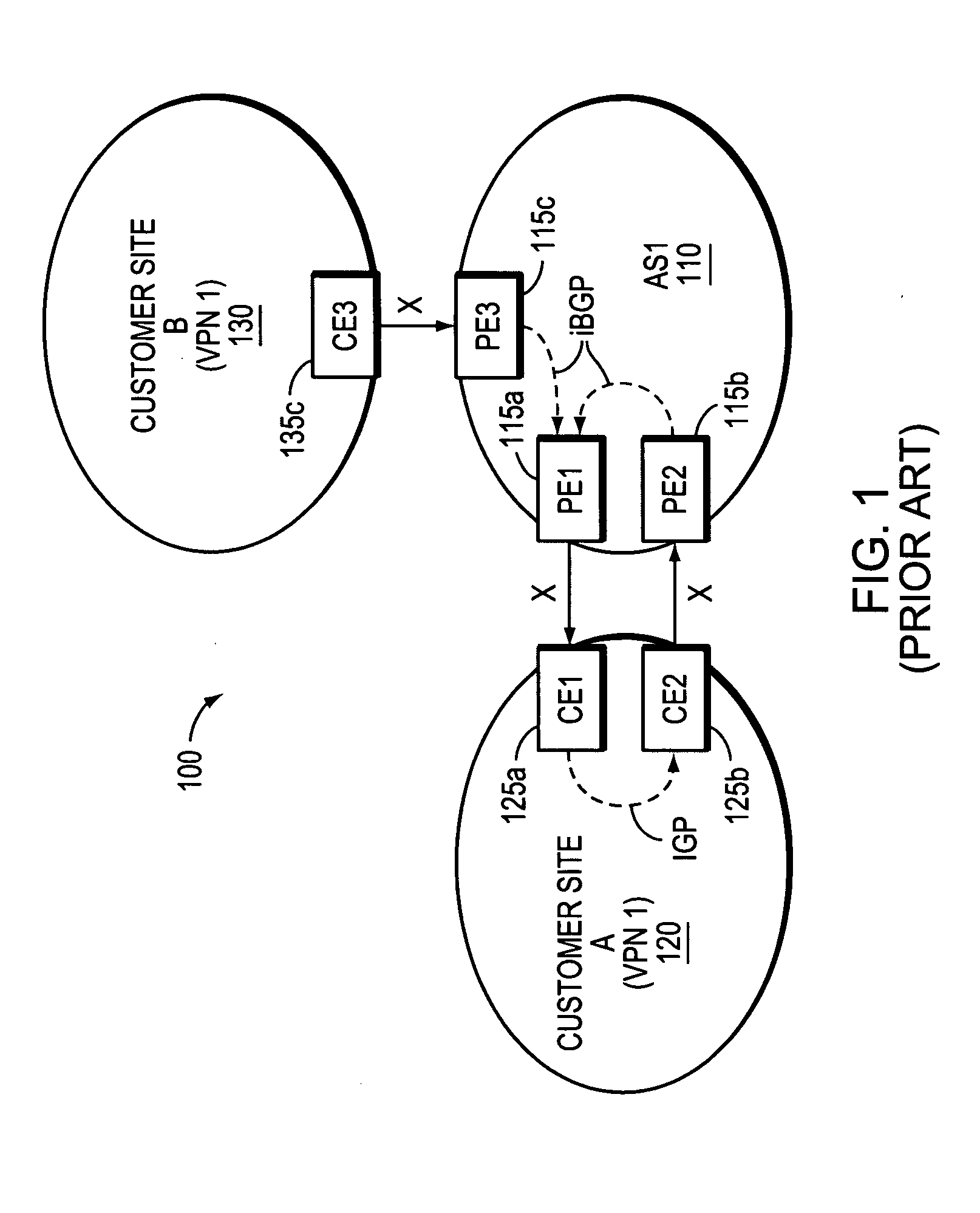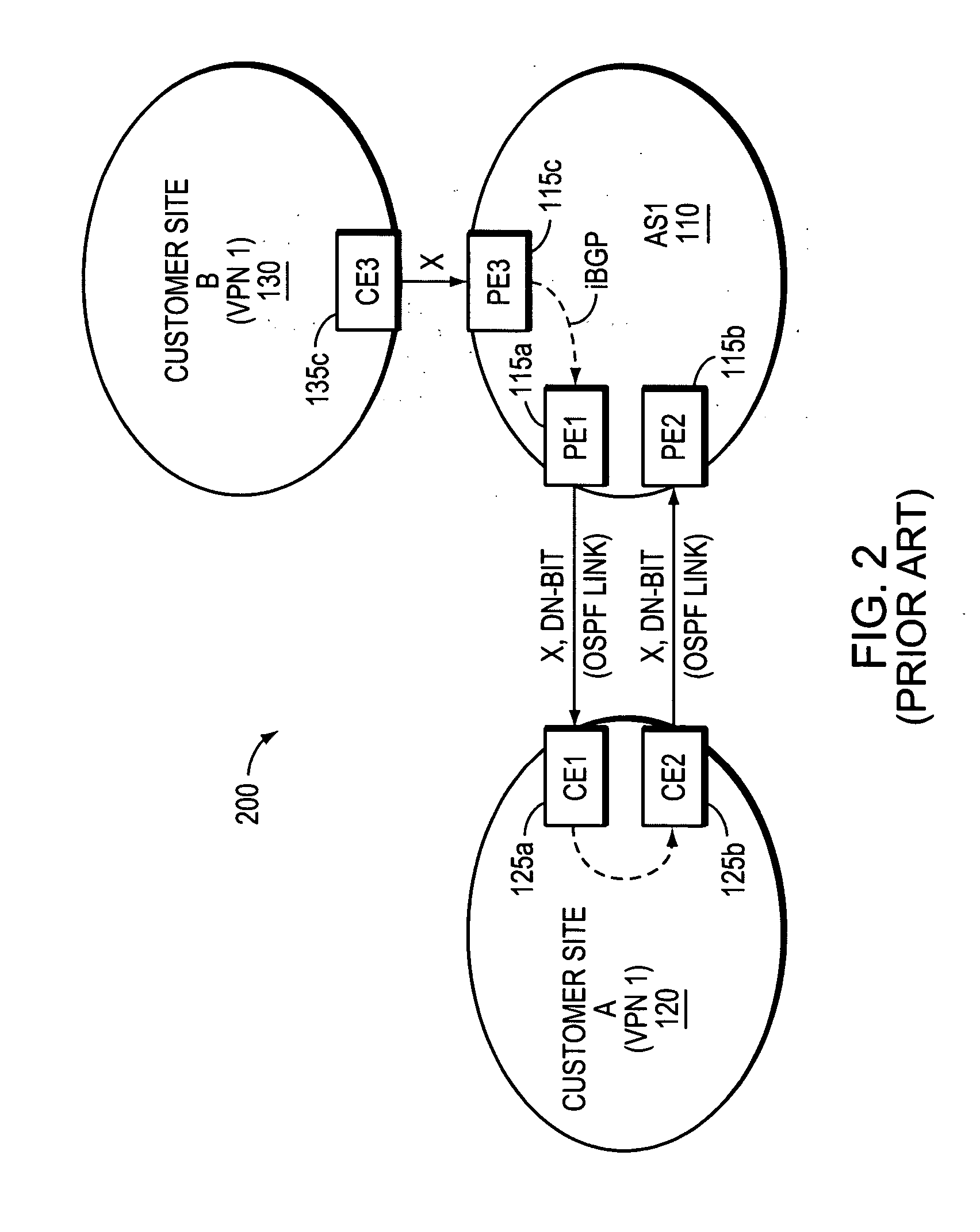Technique for preventing routing loops by disseminating BGP attribute information in an OSPF-configured network
a technology of ospf and attribute information, applied in the field of preventing routing loops in computer networks, can solve the problems of general undesirable solution, inapplicability of ospf route-tag solution, etc., and achieve the effect of preventing routing loops
- Summary
- Abstract
- Description
- Claims
- Application Information
AI Technical Summary
Benefits of technology
Problems solved by technology
Method used
Image
Examples
Embodiment Construction
[0050]FIG. 4 illustrates an exemplary computer network 400 in which an illustrative embodiment of the present invention may be deployed. The network 400 includes a first provider network AS1410 and a second provider network AS2420. The provider networks AS1 and AS2 are not configured to directly communicate with one another, e.g., due to contractual agreement or lack of connectivity. The exemplary network 400 also includes a set of customer sites 430, 440 and 450 (labeled “A,”“B” and “C” respectively) which participate in the same VPN, e.g., VPN1. Each of the customer sites 430-450 is coupled to AS1, which functions as a “primary” ISP for exchanging data among the VPN1 customer sites. In addition, the customer sites 440 and 450 are also coupled to AS2, which functions as a “backup” ISP in the event that a PE-CE link to AS1 fails.
[0051] As shown, the customer site 430 includes a CE device 470a (CE1) which is coupled to a PE device 700a (PE1) located in AS1. In addition, AS1 also inc...
PUM
 Login to View More
Login to View More Abstract
Description
Claims
Application Information
 Login to View More
Login to View More - R&D
- Intellectual Property
- Life Sciences
- Materials
- Tech Scout
- Unparalleled Data Quality
- Higher Quality Content
- 60% Fewer Hallucinations
Browse by: Latest US Patents, China's latest patents, Technical Efficacy Thesaurus, Application Domain, Technology Topic, Popular Technical Reports.
© 2025 PatSnap. All rights reserved.Legal|Privacy policy|Modern Slavery Act Transparency Statement|Sitemap|About US| Contact US: help@patsnap.com



